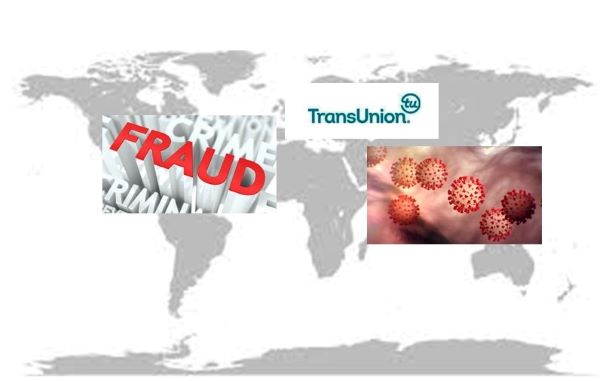Digital Fraudsters Increase Attacks Against Multiple Industries During Pandemic; Use COVID-19 Scams to Target Younger Generations
TransUnion quarterly global fraud analysis also examines the types of fraud targeting businesses and where it originates
TransUnion (NYSE: TRU) has released its quarterly analysis of global online fraud trends, which found that the telecommunications, e-commerce and financial services industries have been increasingly impacted. From a consumer perspective, TransUnion found Millennials have been most targeted by fraudsters using COVID-19 scams.
This quarter TransUnion analyzed fraud trends to reflect the changing economic environment with COVID-19. It used March 11, 2020 – the date the World Health Organization (WHO) declared the coronavirus (COVID-19) a global pandemic – as a base date for its analysis.
Overall, TransUnion found the percent of suspected fraudulent digital transactions rose 5% when comparing the periods Jan. 1-March 10 and March 11-April 28. TransUnion identified more than 100 million suspected fraudulent transactions from March 11-April 28.
“Given the billions of people globally that have been forced to stay at home, industries have been disrupted in a way not seen on this massive of a scale for generations,” said Shai Cohen, senior vice president of Global Fraud & Identity Solutions at TransUnion. “Now that many transactions have shifted online, fraudsters have tried to take advantage and companies must adapt. Businesses that come out on top will be those leveraging fraud prevention tools that provide great detection rates and friction-right experiences for consumers.”
Examining Fraud Types and Their Impact on Industries
TransUnion analyzed the below industries for a change in the percent of suspected fraud against them, comparing the periods of Jan. 1-March 10 and March 11-April 28.
Suspected Fraud Post-Pandemic Declaration
“Our data shows that as social distancing changes shopping patterns, fraudsters have taken notice and targeted the more digital forward industries while following the money,” said Melissa Gaddis, senior director of customer success, Global Fraud & Identity Solutions at TransUnion. “For instance, although we found online gaming increased 64% as people stay home, it isn’t immediately lucrative to target those companies since financial information isn’t generally shared there. However, telecommunications, e-commerce and financial services all have large digital adoption, financial information and payments at the center of their online experience, and fared relatively well compared to other industries during the pandemic.”
Globally across industries, TransUnion found the countries with the highest percent of suspected fraudulent transactions were: 1) Yemen, 2) Syria and 3) Kazakhstan. In the U.S. overall, TransUnion found the cities with the highest percent of suspected fraudulent transactions were: 1) Springfield, Mass., 2) Akron, Ohio, and 3) Louisville, Ky.
Consumers Targeted By COVID-19 Schemes
To better understand the impacts of COVID-19 on consumers, TransUnion surveyed 9,215 adults in the U.S., Canada, Colombia, Hong Kong, India, South Africa and the U.K. during the week of April 13. Nearly three out of 10 respondents (29%) said they had been targeted by digital fraud related to COVID-19, with Millennials (those persons between the ages 26-40) being the most targeted at 34%.
Furthermore, TransUnion found that consumers who said their household income is being negatively impacted by the COVID-19 pandemic are more likely to experience digital fraud with 32% reporting being targeted by online COVID-19 scams, compared to 22% of people not financially impacted.
“A common assumption is that fraudsters target older generations who are perceived to be less digitally capable,” said Gaddis. “Our data showed the opposite with younger generations, Millennials and Gen Z (those born in or after 1995), being the most targeted. Adding insult to injury, our survey found Millennials are being financially challenged the most during the pandemic.”
Methodology
For its transactional data, TransUnion analyzed the billions of online transactions its flagship fraud and identity solution, TransUnion IDVision® with iovation®, assessed for fraud indicators for more than 40,000 websites and apps. It compared the percent of suspected fraudulent transactions it saw from Jan. 1-March 10, 2020 to those from March 11-April 28, 2020.
For a hub of relevant educational resources aimed to help fight fraud during this time, go to the TransUnion Global Fraud & Identity Solutions COVID-19 resource center.
Source: TransUnion Press Release


























